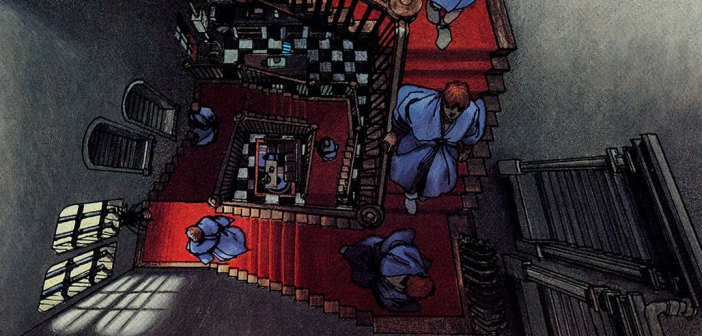Matthew Murdock didn’t sleep well after the death of his true love, Elektra. Haunted by bloody dreams and tormented visions, the blind lawyer and masked vigilante strived in vane to come to grips with the murder of the passionate but deadly assassin—until he realized she was alive. On the frigid winter air, he caught her scent. “I can smell her: Elektra. Her sweat, it gathered in a puddle at her naval. It was salty on my tongue,” Murdock said as he hurdled over the Manhattan skyline, in search of his lost love.
Elektra Lives Again, written and illustrated by Frank Miller, exists as a testament to not only the creator’s love for the Marvel characters Daredevil and Elektra, but also his prowess as one of the greatest comic creators to date. The revitalization of the Daredevil title at the hands of Miller started in 1979 when he began work on the series as an artist, but soon after took over the reins as writer too. The story of the guardian devil of Hell’s Kitchen took a sharp noir tone and Hell’s Kitchen itself became a prominent element in the story, a small kingdom lorded over by the watchful red devil. Miller was also the first to introduce the King Pin as the Daredevil’s main villain and arch nemesis, plucking him out of the Spider-Man title.
Miller’s most notable contribution to Daredevil was the retelling of the character’s origins as a ninja trained by Stick, a blind sensei and leader of the Chaste. Opposite Daredevil was Miller’s creation of Elektra and the Hand, a mystical order of dark assassins. Even after Miller’s departure from the title in 1983, he returned to write stories about the character on and off, such as Daredevil; Born Again, and a retelling of the blind hero’s origin in Daredevil: The Man without Fear.
Originally printed in 1990, the story of Elektra Lives Again revolves around the tormented nights of Matthew Murdock as he’s haunted by dreams and visions of Elektra. Knowing in his mind that she’s indeed dead, his heart achingly prods him to not give up hope. Forever a guilty Catholic, Murdock pleads in confessionals for peace of mind by day while fighting crime and sleeping with random women by night in the hopes of easing his soul. It’s only after catching the assassin’s scent upon the morning air that he sets out to discover the truth of Elektra’s life and death. The Hand also makes an important appearance in their bid to kill and resurrect the assassin Bullseye in hopes to use him against Elektra, whom they too suspect is alive and roaming the world.
The story, only 73 pages long, is a rich symbolic journey into the mind of Daredevil. Not a common superhero tale but rather an epic journey of pain and loss, Elektra Lives Again shows Daredevil at some of his rawest and most human moments. Emblematically powerful, Miller evokes primal archetypes such as the cleansing element of water and the purging power of fire. And for an added twist of playful debauchery, Miller taints the Catholic Eucharist by having the Hand use a church as their base of operations. Dressed a priests and nuns, the group of sorcerers conjured their black magic to resurrect the dead in an orgiastic expression bordering on necrophilia.
The book is not a standard size but rather a large-form volume, which allowed Miller to showcase his impressive visual art, much like he did in his historical epic, 300. But unlike 300, Miller reminds his readers here how much of a master he is at using panels to their fullest ability in an expression of sequential storytelling. He’s completely at the top of his form in Elektra Lives Again; his art is sharp and careful, gripping and moving. And with colors from Lynn Varley, her use of shades is breathtaking in their smooth appearance and rich presentation.
As the story ends, Daredevil understands that the memories and nightmares of Elektra that plague him are not the doing of his lost love. They are all his creation. “She wasn’t haunting me. I was haunting her.”
This comic book review originally appeared on Comic News on 15 January 2009.




